Rice Planting in Nepal
Have you ever wondered about the intricate art of rice planting in Nepal?
The process of cultivating rice in this vibrant country goes far beyond just agricultural practices; it is deeply intertwined with the very fabric of Nepalese life.
From the significance of rice planting in sustaining households to the communal celebrations that mark the beginning of the monsoon season, there is a wealth of cultural insights waiting to be uncovered.
Join the exploration of this ancient tradition to discover the profound connections between rice cultivation and the rich tapestry of Nepalese identity.
Key Points
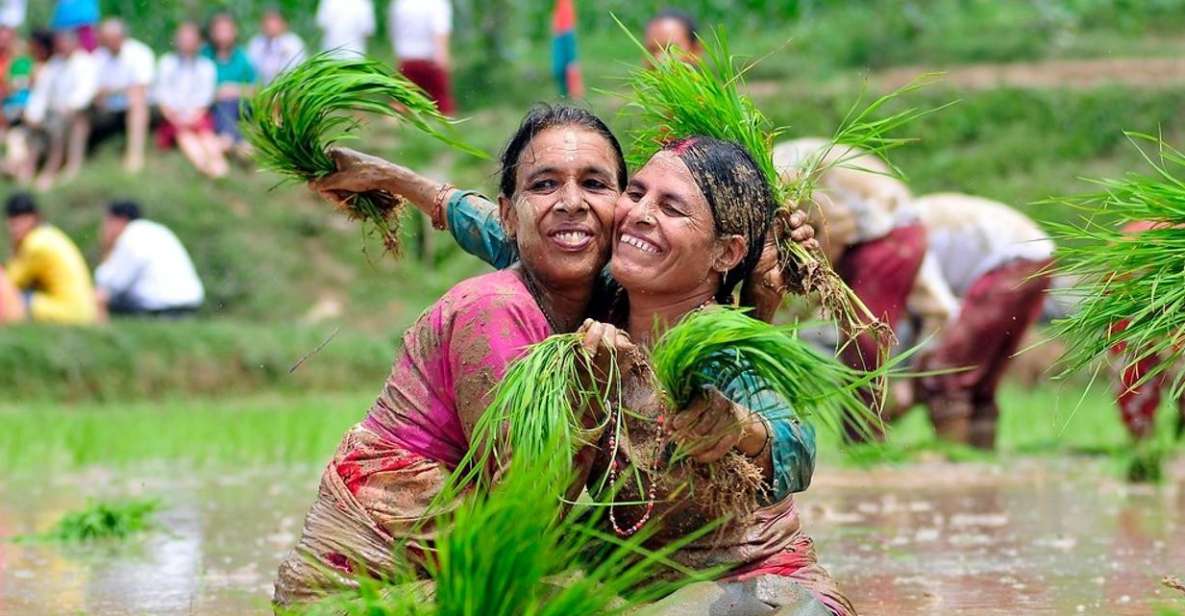
- Rice planting in Nepal symbolizes cultural heritage and prosperity.
- Traditional practices emphasize manual labor and community unity.
- Festivals like Ropai Jatra celebrate rice planting with joy and togetherness.
- Sustainable farming methods ensure harmony with nature and generational legacy.
Significance of Rice Planting
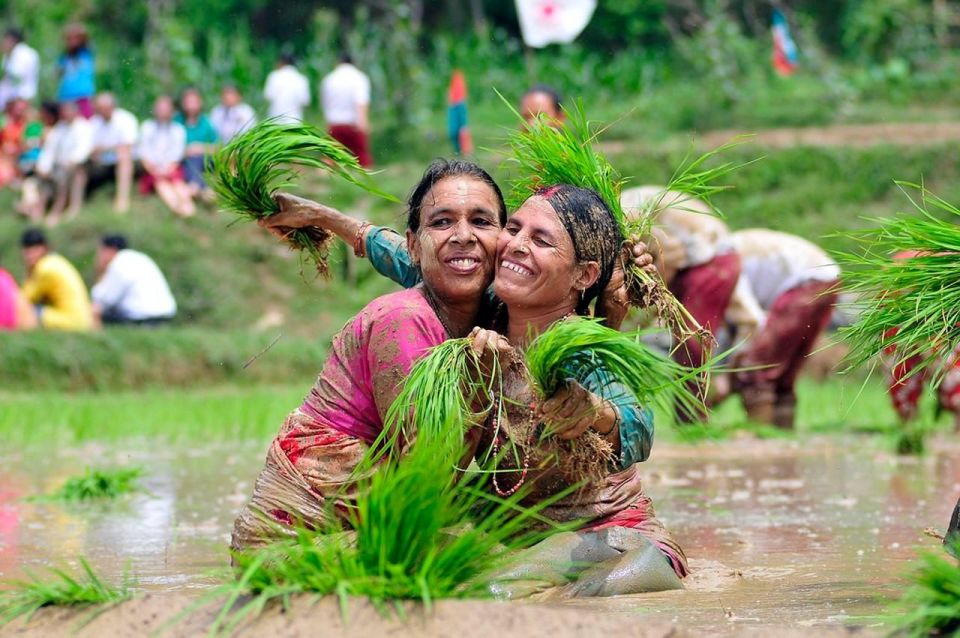
Rice planting in Nepal holds profound significance as it serves as the cornerstone of Nepalese culture and tradition, symbolizing prosperity and abundance for the community. These cultural traditions have been passed down through generations, emphasizing the importance of agricultural sustainability.
Rice farming isn’t just a means of livelihood but a way of life for many Nepalese households, connecting them deeply to the land and its bounties. The act of planting rice isn’t merely a task but a celebration, with communities coming together to partake in this age-old practice.
This unity and collective effort not only ensure a successful harvest but also strengthen the bond among community members, highlighting the intrinsic link between cultural heritage and agricultural practices.
Traditional Paddy Plantation Practices
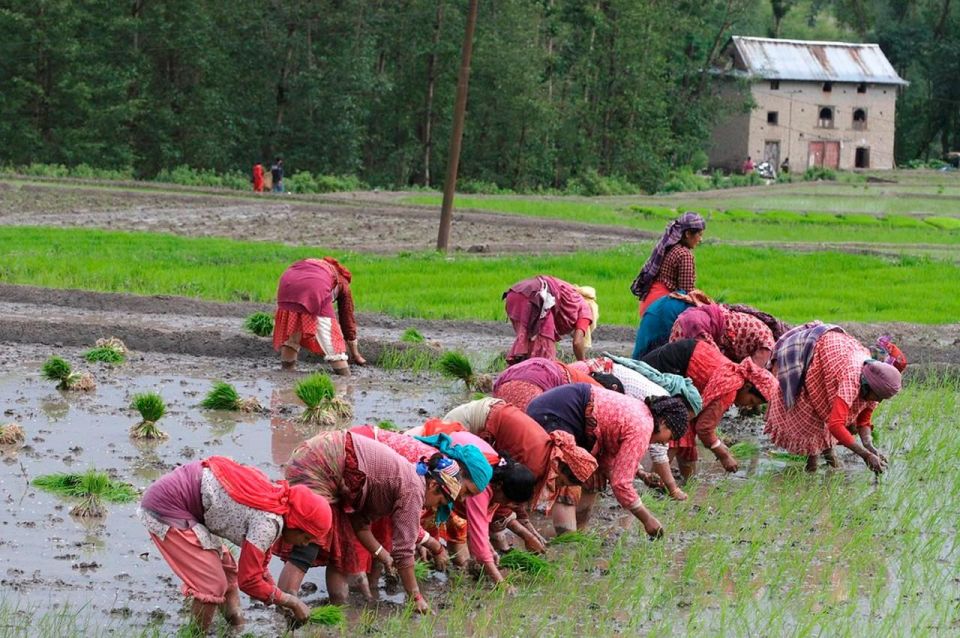
Embracing age-old agricultural traditions, communities in Nepal engage in a series of meticulous steps during the paddy planting season to ensure a successful harvest.
- Cultural rituals: Ceremonies to invoke blessings for a bountiful harvest.
- Agricultural techniques: Manual plowing using oxen for traditional field preparation.
- Seed selection: Careful selection of high-quality paddy seeds for planting.
- Transplanting process: Delicate transplanting of semi-grown paddy plants into flooded fields.
- Water management: Utilization of traditional irrigation methods to maintain optimal water levels.
These practices not only showcase the deep-rooted cultural connection to agriculture but also highlight the sustainable agricultural techniques passed down through generations.
Community Celebrations and Festivities
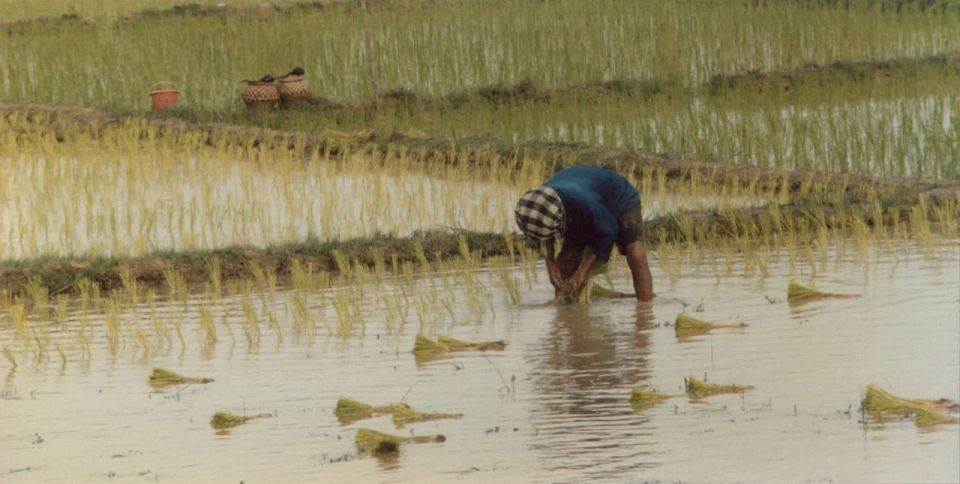
Amidst the vibrant greenery of Nepal’s monsoon season, community celebrations and festivities come alive, enveloping villages in a tapestry of joy and togetherness. The Nepalese people partake in various festive rituals and community gatherings during the rice planting season, creating a sense of unity and shared purpose. One of the most anticipated celebrations is the Ropai Jatra, where locals come together to plant paddy in a joyful atmosphere. This festival not only marks the beginning of the rice planting season but also serves as a time of happiness and camaraderie among the Nepalese communities. The table below highlights some of the key aspects of these community celebrations and festive rituals:
| Community Celebrations | Festive Rituals |
|---|---|
| Ropai Jatra | Planting paddy seeds |
| Joyful atmosphere | Shared purpose |
| Unity among locals | Celebratory traditions |
| Togetherness | Sense of community |
Cultural Insights and Beliefs
Cultivating a deep understanding of Nepal’s cultural fabric reveals a tapestry woven with rich insights and enduring beliefs.
-
Sacred Rituals: Rice planting ceremonies are steeped in cultural traditions, reflecting the deep-rooted beliefs of the Nepalese people.
-
Harmony with Nature: Farming practices emphasize the interconnectedness between humans and the land, showcasing a reverence for nature.
-
Generational Legacy: Passed down through families, rice planting symbolizes the continuity of cultural heritage and ancestral wisdom.
-
Community Unity: Collaborative farming practices promote solidarity and communal support, fostering a sense of togetherness.
-
Spiritual Significance: Rice farming isn’t just a livelihood but a spiritual practice, embodying values of prosperity and abundance within Nepalese society.
The Role of Rice in Nepalese Society
Rice holds a central role in Nepalese society, serving as a staple food source and cultural cornerstone. Its significance goes beyond sustenance; rice plays a vital role in rituals and ceremonies, symbolizing prosperity and abundance. In Nepalese culture, the economic importance of rice cannot be overstated. It sustains many households, driving the local economy and providing livelihoods for a significant portion of the population. The act of rice planting is not just a farming practice but a deeply rooted tradition celebrated as a festival. This communal activity fosters unity among community members, highlighting the interconnectedness of Nepalese society. Below is a table summarizing the multifaceted role of rice in Nepalese society:
| Role | Description |
|---|---|
| Staple Food | Primary food source for Nepalese |
| Cultural Symbol | Represents prosperity and abundance |
| Ritualistic | Integral part of ceremonies |
| Economic | Drives local economy and livelihoods |
| Community Bond | Fosters unity among community members |
Sustainable Farming Practices in Nepal
Embarking on a journey through the verdant landscapes of Nepal unveils a tapestry of sustainable farming practices deeply rooted in the country’s agricultural traditions and ecological ethos. These practices not only ensure the prosperity of the land but also prioritize environmental sustainability.
-
Crop Rotation: Farmers in Nepal follow a crop rotation system that helps maintain soil fertility and reduces the risk of pests and diseases.
-
Organic Farming: Many farmers in Nepal practice organic farming techniques, avoiding synthetic chemicals and pesticides to minimize environmental impact.
-
Water Conservation: Traditional irrigation methods like terracing and rainwater harvesting are employed to conserve water resources and promote sustainable farming.
-
Agroforestry: Integrating trees and crops on the same piece of land helps enhance soil fertility, biodiversity, and carbon sequestration.
-
Vermicomposting: Utilizing earthworms to decompose organic waste into nutrient-rich compost improves soil health and reduces the need for chemical fertilizers.
Connection Between Rice and Nepalese Identity
In the heart of Nepal, the humble grain of rice weaves a narrative of cultural heritage and national pride, embodying the essence of Nepalese identity. Rice isn’t just a staple food; it’s deeply intertwined with the country’s cultural heritage and agricultural traditions.
The act of planting and harvesting rice is a significant part of Nepalese identity, symbolizing prosperity, abundance, and unity. The traditional paddy plantation celebrated as a festival brings communities together, highlighting the importance of rice farming in sustaining many households.
Through rice planting, Nepalese people connect with their roots, honoring the age-old traditions that have been passed down through generations. This bond between rice and Nepalese identity showcases the resilience and richness of the country’s cultural fabric.
Common questions
How Do Nepalese Farmers Determine the Best Time to Start the Paddy Plantation Process?
Farmers in Nepal determine the best time for paddy plantation through weather forecasting and the lunar calendar. They consider soil prep and planting techniques, ensuring optimal conditions for growth. This careful planning leads to successful harvests.
Are There Any Specific Rituals or Ceremonies Performed Before the Planting of Rice in Nepal?
In Nepal, before planting rice, cultural practices and traditional beliefs dictate specific rituals. These ceremonial preparations hold significant importance, symbolizing unity and prosperity. Community involvement in these rituals fosters a sense of togetherness and shared abundance.
What Tools and Techniques Are Traditionally Used in the Paddy Planting Process in Nepal?
When planting paddy in Nepal, traditional tools like sickles and plows are used. Techniques involve labor division, proper soil preparation, seed selection, and pest management. Irrigation methods are crucial, and field maintenance ensures a successful harvest season.
How Do Nepalese Communities Ensure the Sustainability of Rice Farming Practices Throughout the Year?
Nepalese communities ensure sustainability in rice farming practices through water management, crop rotation, maintaining soil fertility, and effective pest control. By integrating these methods, they preserve the ecosystem’s balance while securing abundant harvests year-round.
Are There Any Superstitions or Beliefs Associated With Rice Planting in Nepalese Culture?
Cultural beliefs and superstitions play a significant role in Nepalese traditions. They intertwine with traditional practices like planting techniques, adding depth and meaning to rituals. These beliefs connect communities to their roots and foster a sense of unity.
Last Words
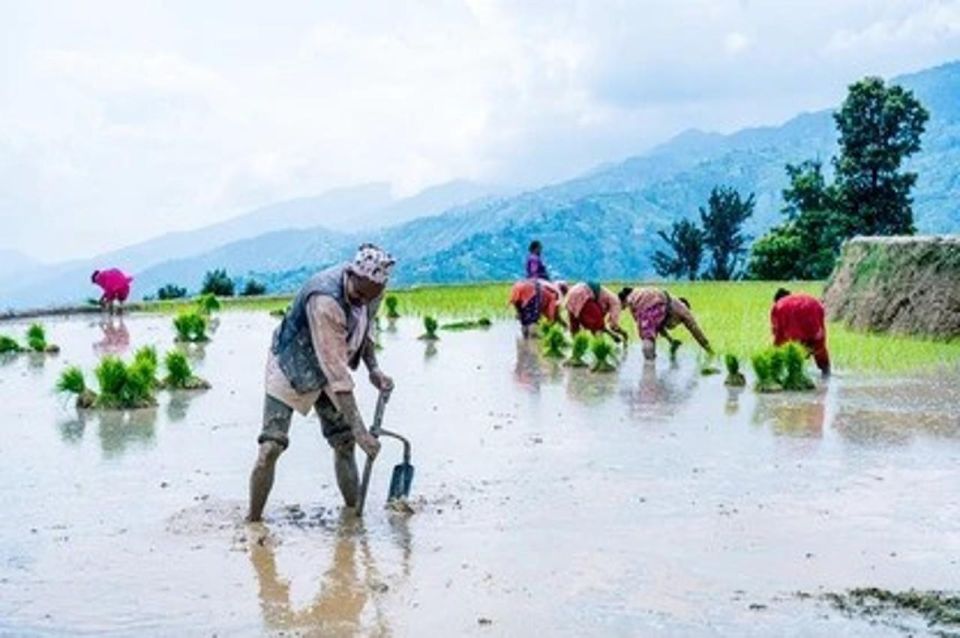
As the sun sets over the lush fields of Nepal, the art of rice planting continues to thrive, weaving together the threads of tradition, community, and sustainability.
From the meticulous paddy cultivation practices to the vibrant celebrations that unite locals, rice planting in Nepal is more than just a crop – it’s a symbol of prosperity, unity, and the deep-rooted connection between the Nepalese people and their land.
Join in on this immersive journey and experience the magic of rice planting firsthand.